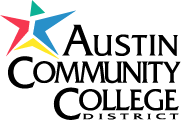Full-Time Faculty Hiring Overview
Here at ACC, we are concluding the second year of a three-year opportunity to hire approximately 100 additional new full-time faculty. Historically, our full-time faculty hiring has consisted of two approaches. First, we have replaced full-time faculty who have retired or resigned (including moving vacant full-time faculty positions to other departments where there was a greater need). In combination with replacing vacant faculty positions, we have also used the budget process to allow instructional departments to request new full-time faculty positions. Funding for new full-time faculty positions has been variable through the years, as it is subject to other high-priority needs and tied to enrollment projections.
Two years ago, our Board of Trustees approved a “pot of money” to hire 100 new full-time faculty over the course of three years. Community colleges are measured on the percentage of semester credit hours (SCH) taught by full-time faculty. If you look at the Texas Public Higher Education Almanacs put out by the Texas Higher Education Coordinating Board (THECB), you’ll see that this data point ranges rather broadly, but our peers show this for Fall 2022:
- Alamo: 74%
- Dallas: 76%
- San Jacinto: 81%
- Tarrant: 67%
- ACC: 68%
ACC’s Fall 2024 Fact Book shows that, by headcount, we had 751 full-time faculty members and 1065 adjunct faculty members. Of the total number of full-time faculty, 693 were instructional faculty (we also have librarian faculty and counseling faculty). ACC’s own Collegewide Departmental Snapshot 2024 from OIRA shows that in academic year 2022-2023, prior to the launch of the three-year full-time faculty hiring plan, the collegewide percentage of SCH taught by full-time faculty was at 58% (no change from AY 2021-2022).
Why the 10-point difference between what we see from THECB (68% of SCH taught by FT faculty) and our internal snapshot (58% of SCH taught by FT faculty)? We asked our guru for all things data-related, Dr. Jenna Cullinane Hege, Vice Chancellor of Institutional Research & Analytics. She tells us that THECB takes a narrower approach in its effort to provide peer comparisons. THECB includes fundable hours only, the Fall semester only, and all individuals with a faculty position teaching a class. Our OIRA colleagues want to be more comprehensive, so we include both fundable and nonfundable hours, the full academic year, and only the primary instructor. Using our 58% internal data, we set a goal to increase that overall percentage to 65%.
To intentionally and strategically try to increase the overall percentage of semester credit hours taught by full-time faculty, we take a data-informed approach. We look at the departmental snapshots from OIRA, we look at a program’s curriculum, its accrediting standards (where applicable), its enrollment patterns and labor market outcomes, and many other factors.
Below is a table showing an overview of where we’ve hired new full-time faculty for AY 2025 and AY 2025. We’ve hired 55 to date, and we will be posting additional positions in the coming AY 2026.
| Dean Area | Number of new positions |
|---|---|
| Arts & Digital Media | 10 |
| Advanced Manufacturing | 3 |
| Business | 3 |
| Computer Science & Information Technology | 2 |
| Design, Construction, and Applied Tech | 5 |
| Health Sciences | 10 |
| Liberal Arts, Humanities & Communications | 11 |
| Liberal Arts, Social & Behavioral Sciences | 7 |
| Science, Engineering, & Math | 4 |
Our goals for this three-year initiative are to open up opportunities for adjunct faculty to apply for full-time positions, to bring in new perspectives to our teaching and learning enterprise, to respond to our explosive enrollment growth, and to come closer to our desired college-wide ratio of 65% of semester credit hours taught by full-time faculty. We’ll keep you posted as we move into year three of this initiative.
Back to Top
